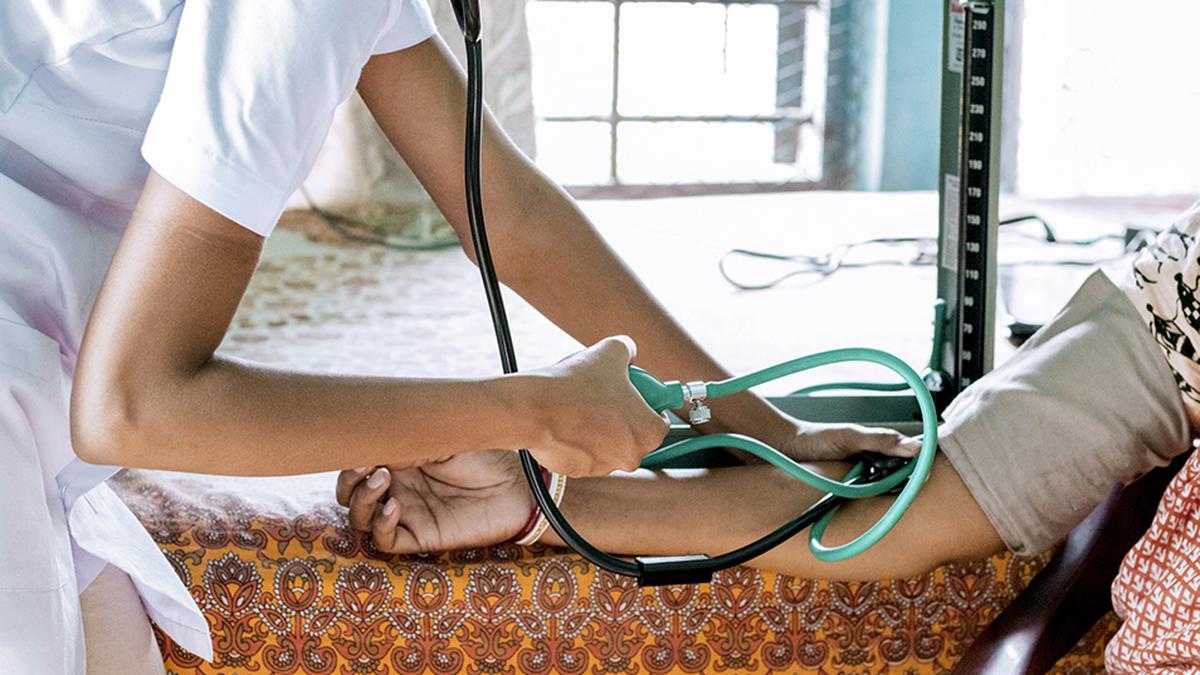
WHO releases its first-ever report on global impact of high BP, states approximately four in every five not treated adequately
The Hindu
The World Health Organization (WHO) in a report noted that approximately four out of every five people with hypertension are not adequately treated, but if countries can scale up coverage, 76 million deaths could be averted between 2023 and 2050. Hypertension is the most important risk factor for death and disability in India. The WHO report states that hypertension affects one in three adults worldwide. Lifestyle changes such as eating a healthier diet, quitting tobacco and being more active can help lower blood pressure, it says.
Approximately four out of every five people with hypertension are not adequately treated, but if countries can scale up coverage, 76 million deaths could be averted between 2023 and 2050, noted the World Health Organization (WHO) in its first-ever report on the global impact of high blood pressure on Tuesday.
Hypertension is the most important risk factor for death and disability in India, according to a paper in The Lancet, regional health (South-east Asia), published late last year. It adds that less than one-fourth of hypertensive patients in India had their blood pressure under control during 2016–2020, though this rate has improved compared to previous years, substantial differences exist across regions.
It also states that the 2019–2020 National Family Health Survey (NFHS-5) reported a hypertension prevalence of 24% in men and 21% among women, an increase from 19% and 17% respectively from the previous round (2015–16). India runs the India Hypertension Control Initiative programme which is a large-scale hypertension intervention under National Health Mission and has been recognised for its positive work done within the country’s existing primary healthcare system.
The WHO report states that hypertension affects one in three adults worldwide. This common, deadly condition leads to stroke, heart attack, heart failure, kidney damage and many other health problems.
The number of people living with hypertension (blood pressure of 140/90 mmHg or higher or taking medication for hypertension) doubled between 1990 and 2019, from 650 million to 1.3 billion. Nearly half of people with hypertension globally are currently unaware of their condition. More than three-quarters of adults with hypertension live in low- and middle-income countries.
Recommending ways to win the race against this silent killer, the world organisation states that lifestyle changes such as eating a healthier diet, quitting tobacco and being more active can help lower blood pressure. Some people may need medicines that can control hypertension effectively and prevent related complications.
“Prevention, early detection and effective management of hypertension are among the most cost-effective interventions in health care and should be prioritised by countries as part of their national health benefit package offered at a primary care level. The economic benefits of improved hypertension treatment programmes outweigh the costs by about 18 to 1,” notes the WHO.

“Writing, in general, is a very solitary process,” says Yauvanika Chopra, Associate Director at The New India Foundation (NIF), which, earlier this year, announced the 12th edition of its NIF Book Fellowships for research and scholarship about Indian history after Independence. While authors, in general, are built for it, it can still get very lonely, says Chopra, pointing out that the fellowship’s community support is as valuable as the monetary benefits it offers. “There is a solid community of NIF fellows, trustees, language experts, jury members, all of whom are incredibly competent,” she says. “They really help make authors feel supported from manuscript to publication, so you never feel like you’re struggling through isolation.”

Several principals of government and private schools in Delhi on Tuesday said the Directorate of Education (DoE) circular from a day earlier, directing schools to conduct classes in ‘hybrid’ mode, had caused confusion regarding day-to-day operations as they did not know how many students would return to school from Wednesday and how would teachers instruct in two modes — online and in person — at once. The DoE circular on Monday had also stated that the option to “exercise online mode of education, wherever available, shall vest with the students and their guardians”. Several schoolteachers also expressed confusion regarding the DoE order. A government schoolteacher said he was unsure of how to cope with the resumption of physical classes, given that the order directing government offices to ensure that 50% of the employees work from home is still in place. On Monday, the Commission for Air Quality Management in the National Capital Region and Adjoining Areas (CAQM) had, on the orders of the Supreme Court, directed schools in Delhi-NCR to shift classes to the hybrid mode, following which the DoE had issued the circular. The court had urged the Centre’s pollution watchdog to consider restarting physical classes due to many students missing out on the mid-day meals and lacking the necessary means to attend classes online. The CAQM had, on November 20, asked schools in Delhi-NCR to shift to the online mode of teaching.









